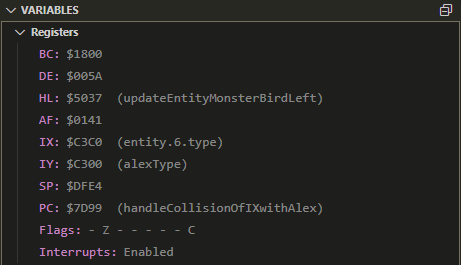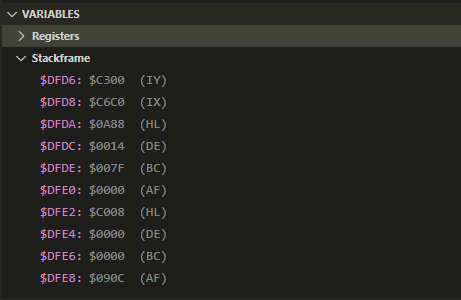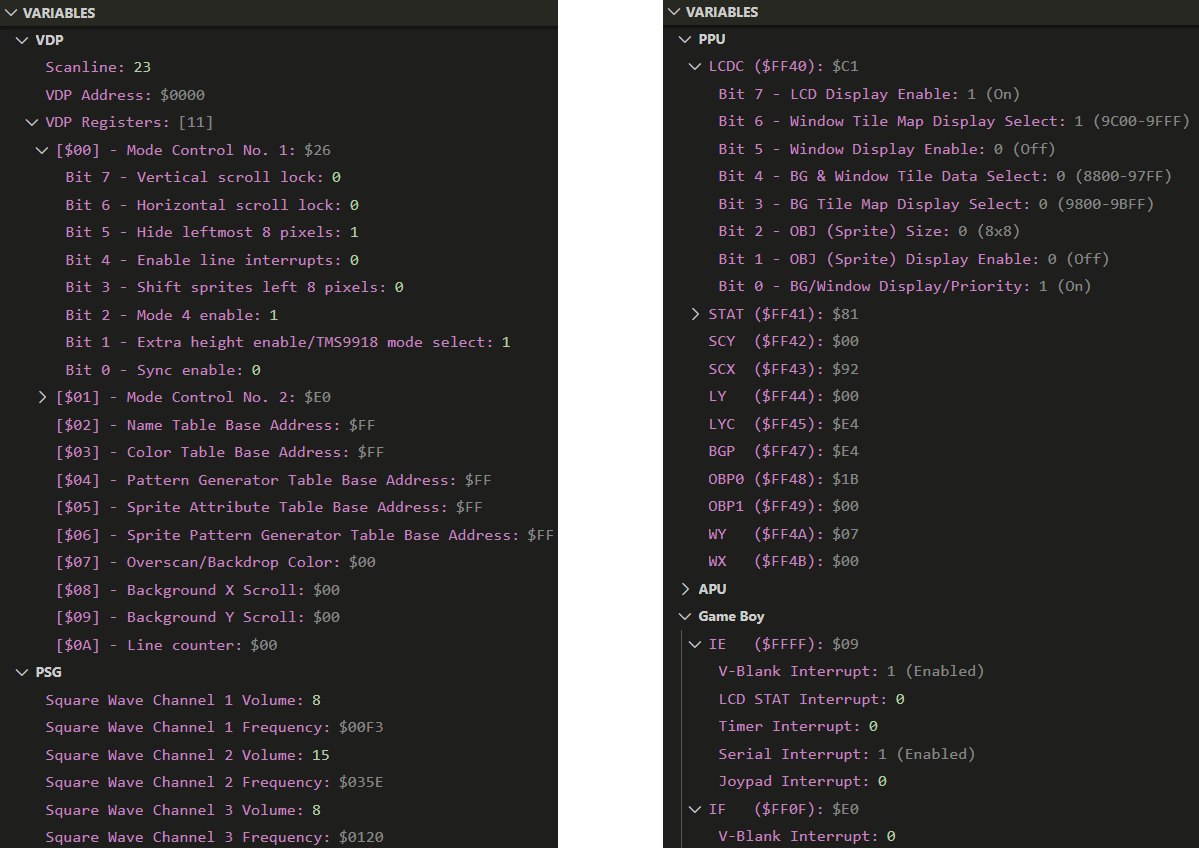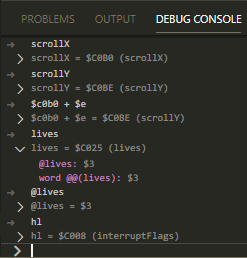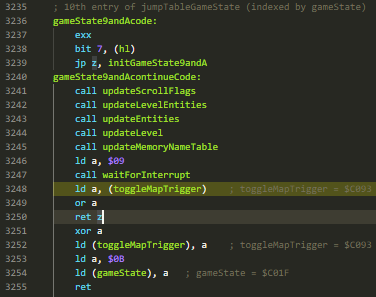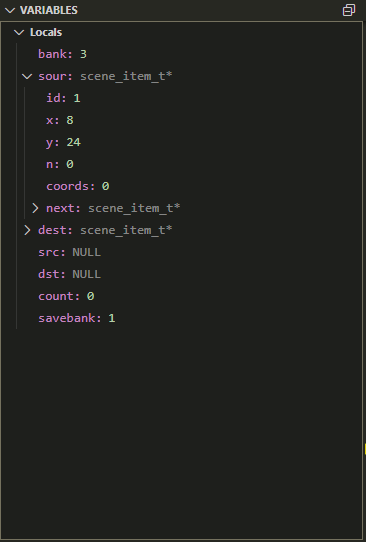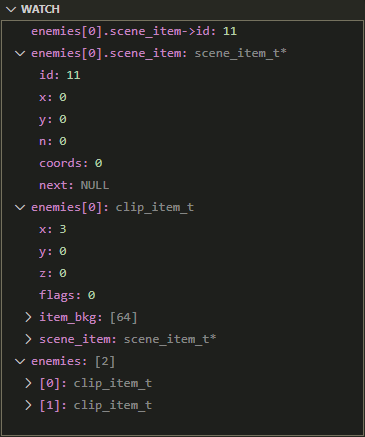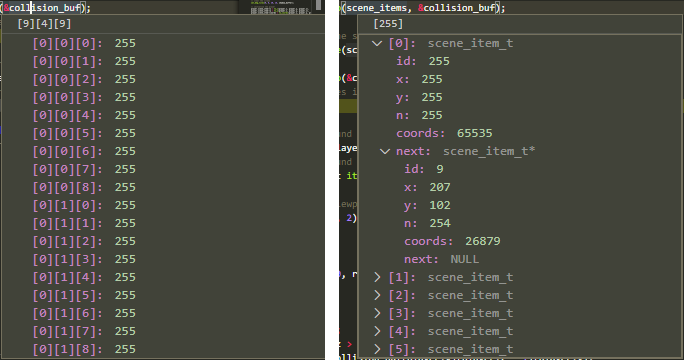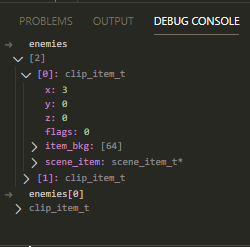The "emulicious-debugger" extension enables debugging with Emulicious in VS Code. This extension requires Emulicious.
For breakpoints to work you need a language extension for the language you are using.
For usage instructions see Usage.
Known issues are listed in Known Issues.
If you encounter any other issues please inform about them so they can be fixed.
If anything is unclear please also inform about that so the explanations can be improved.
The "emulicious-debugger" extension requires Visual Studio Code (VS Code) or VSCodium and Emulicious.
For breakpoints to work you need a language extension for the language you are using.
If you are using C you can for example use the C language extension that is built into VS Code.
For other languages you should be able to find a corresponding language extension in VS Code's Extension Marketplace.
For example if you are developing for the Game Boy (Color) with RGBDS you can find Donald Hays's RGBDS Z80 extension.
If you want to attach to a running debug session in Emulicious or want to launch a debug session in a running instance of Emulicious, you need to enable Remote Debugging in Emulicious's Tools menu.
If you want VS Code to start Emulicious when you launch the Emulicious Debugger, you need to specify the path to Emulicious in your configuration.
You can either set it globally in your user/workspace settings via CTRL+, -> Extensions -> Emulicious Debugger or locally for your project only via a launch configuration. You can let emuliciousPath point to either Emulicious.jar, Emulicious.exe, Emulicious.bat or the folder containing Emulicious.jar.
After that is set up, you have multiple ways in VS Code to start debugging with Emulicious:
- From the command palette (CTRL+SHIFT+P) select "Attach to Emulicious" to attach the VS Code debugger to a running debug session of Emulicious.
- Select the ROM file in VS Code and click on Run/Debug Editor Contents in top right corner. It is possible that both of these options are hidden in the ... menu.
- Click on Run (CTRL+SHIFT+D) in the left toolbar and either click on "create a launch.json file" or on "Show". When you click "Show" you can choose from "Attach to Emulicious" and "Launch in Emulicious". That will create a launch configuration. By default that launch configuration always asks for the program to run but you can enter the name into the launch configuration. You can also add "preLaunchTask":${defaultBuildTask} if you have a default build task set up. With this setting, you make VS Code start the build task before debugging.
- If a launch configuration is already available you can press F5 to start debugging.
Option 3) is the preferred one because it allows building and launching with a single press of a button (F5).
When building your program, make sure that debug symbols get generated.
For assembler code, this typically is a *.sym or *.lst file.
For C code with SDCC, this is a *.cdb file.
Please consult the documentation of your assembler/compiler to determine how to generate such files.
For example when using lcc from GBDK, you can pass -debug to it to make it generate debug symbols. If you invoke sdcc directly, you need to pass --debug to each call to it.
The "emulicious-debugger" extension enables source level debugging for assembler code and C code (SDCC).
Step through your own ASM source code.
Break on breakpoints in your ASM source code.
Keep an eye on your callstack.
Investigate registers annotated with symbols.
Investigate stackframes.
Investigate system state.
Inspect symbols on hover.
Evaluate expressions in debug console
Disassemble with Emulicious and step through the disassembly in VS Code.
Step through your C source code line by line, into procedures or out of them.
Break on breakpoints in your C source code.
Keep an eye on your C callstack.
Keep track of your local variables.
Inspect your C arrays and structs via Watch expressions, on hover or via the debug console.
On Mac OS, you might see the following error message:
This error is caused by missing permissions. You can fix this error by granting the required permissions to /System/Library/CoreServices/Jar Launcher.app.
Due to the way how VS Code handles exception breakpoints, you need to start another debug session to make the list of exception breakpoints update.
When debugging C code, you might notice that sometimes the debugger does not behave the way you would expect. This is not really an issue of the debugger or your program.
The unexpected behavior is caused by optimizations done by SDCC. SDCC makes changes to your code which provide a performance gain without altering the semantics of your code. So it is possible that (unused) variables get eliminated and that the order of instructions is swapped.
Another optimization done by SDCC is called register allocation. That means that some variables live in CPU registers. For their values, the debugger shows the note (value in register). At points where the value is not relevant, the value might not be in the specified register. In that case, the displayed value doesn't match the actual value of the variable.
Please consult the documentation of SDCC if you want to disable these optimizations or want to learn more about them.
Debugging code that uses inline can be confusing because in the debug symbols, the inlined code is treated as if it was inlined at the call site. As a consequence, it's not possible to step over the call site, like you could at a regular call site. You also cannot step out of the inlined code for the same reason. If you try to step out of the inlined code, you are stepping out of the caller because the caller hasn't called the other code, it's inlined instead. Furthermore, there's no separate variable scope for the inlined scope, the inlined scope is merged with the caller's scope.
Emulicious is a free to use multi-system emulator for Windows, Linux, Raspberry Pi OS, Mac OS(X) and any other operating system supporting Java SE.
It is focused on reverse-engineering, ROM hacking and development. For that it provides several tools such as a debugger with a smart disassembler (splitting code from data).
Emulicious emulates the Game Boy and Game Boy Color, the MSX1 and the Master System and the Game Gear.
Added an error message if no port is specified
Added system for launch configurations to specify the system to emulate
Fixed typos in some error messages
Added maxAttempts to specify the number of attempts when trying to connect to Emulicious after launching it
Added host to specify the host to connect to
Added fallback to run Emulicious from PATH if emuliciousPath is not set
Fixed unnecessary delays caused by stdio
Added support for launching Emulicious from VS Code
Added emuliciousPath to specify the path to Emulicious
Added javaPath to specify the path to Java, if another runtime should be used than the default
Added additionalSrcFolders property for launch configurations
Added better error message for when Emulicious is not running
README improvements
Added description of Emulicious and added gamegear keyword
Added some missing keywords and improved some screenshots
README improvements
Initial release of "emulicious-debugger"



